FIRE
Fire plays an integral role in Australia's landscape.
It is both a tool for humanity and the environment,
but also a danger when it takes the form of a bush fire.
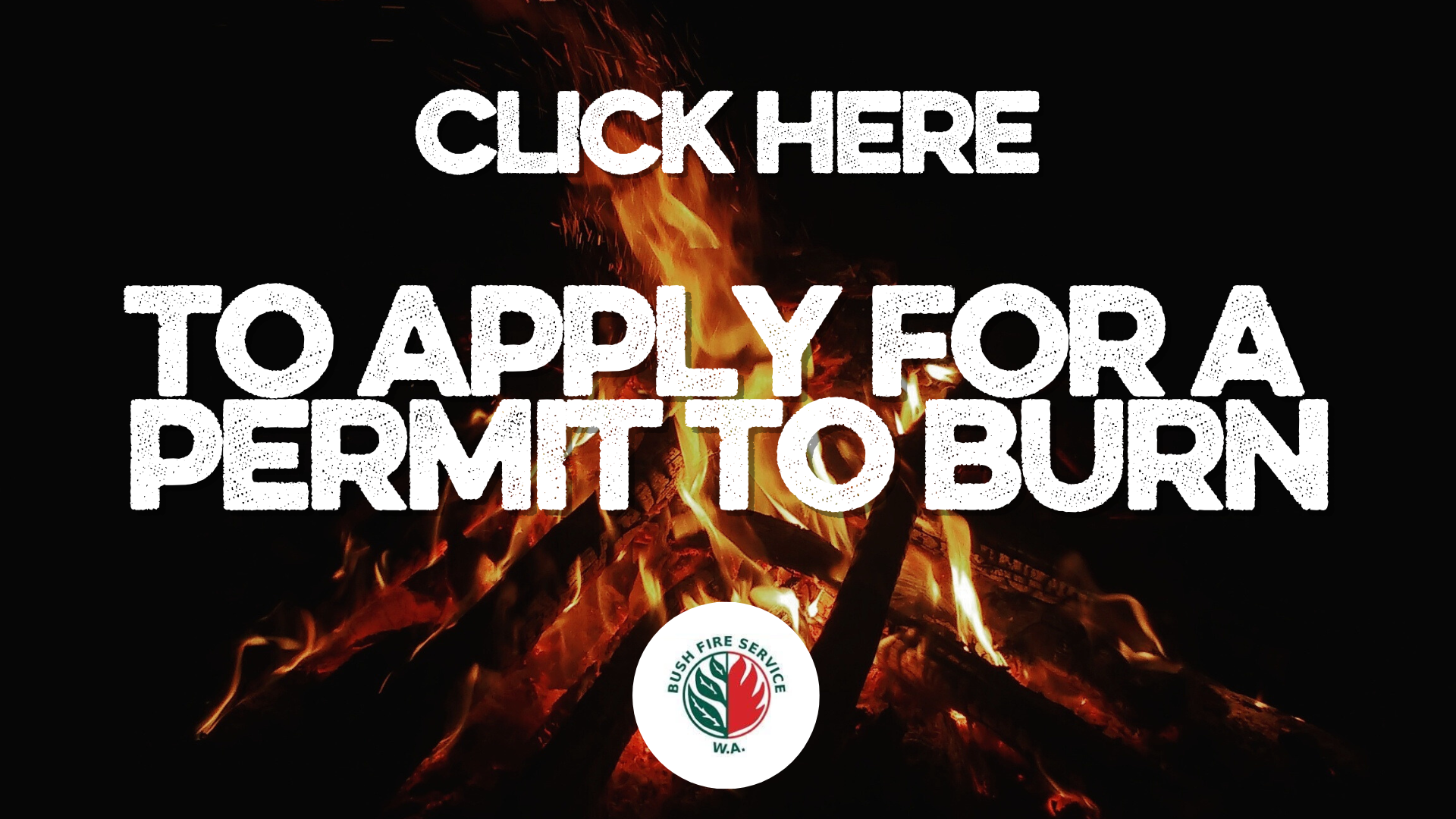
|
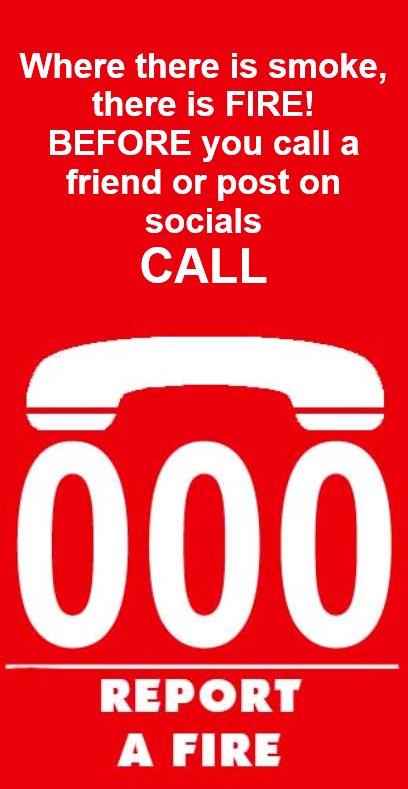 |
New Australian Warning System
2024 saw the launch of the Australian Warning System (AWS). Please read this information as it may save property and lives.
About the new AWS
Get to know the AWS Warning Levels - poster

Call to Action - Advice
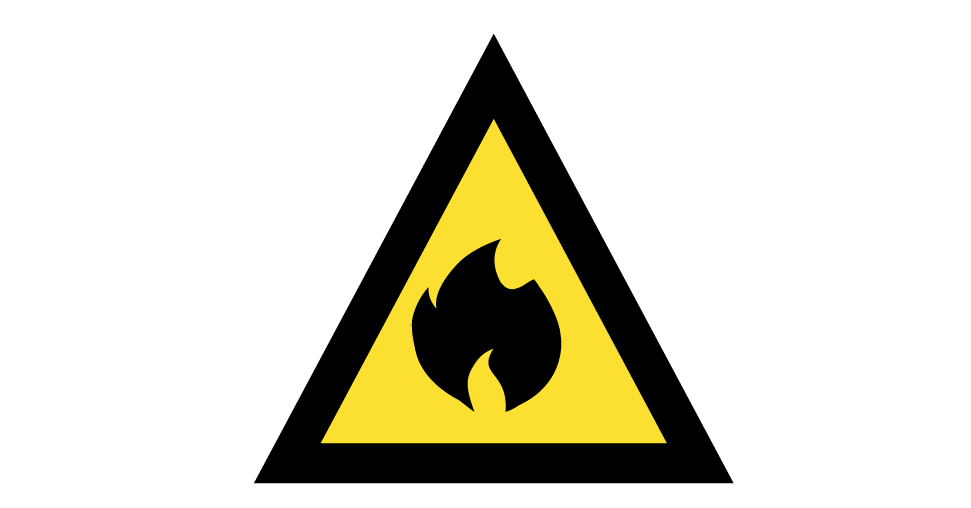
- Prepare now
- Stay informed
- Monitor conditions
- Stay informed/threat is reduced
- Avoid the area
- Return with caution
- Avoid smoke
Call to Action - Watch and Act
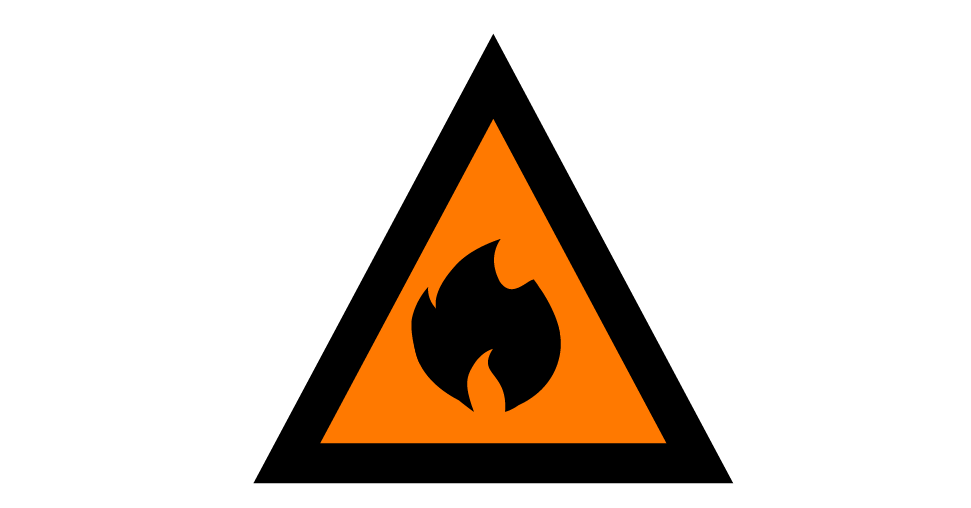
- Prepare to leave/evacuate
- Leave/evacuate now (if you are not prepared)
- Prepare to take shelter
- Move/stay indoors
- Stay near shelter
- Walk two or more streets back
- Monitor conditions as they are changing
- Be aware of ember attack
- Limit time outside (heat, asthma)
- Avoid the area of the fire
- Stay away from damaged buildings and other hazards
- Prepare for isolation
- Protect yourself against the impacts of extreme heat
- Not safe to return
Call to Action - Emergency Warning
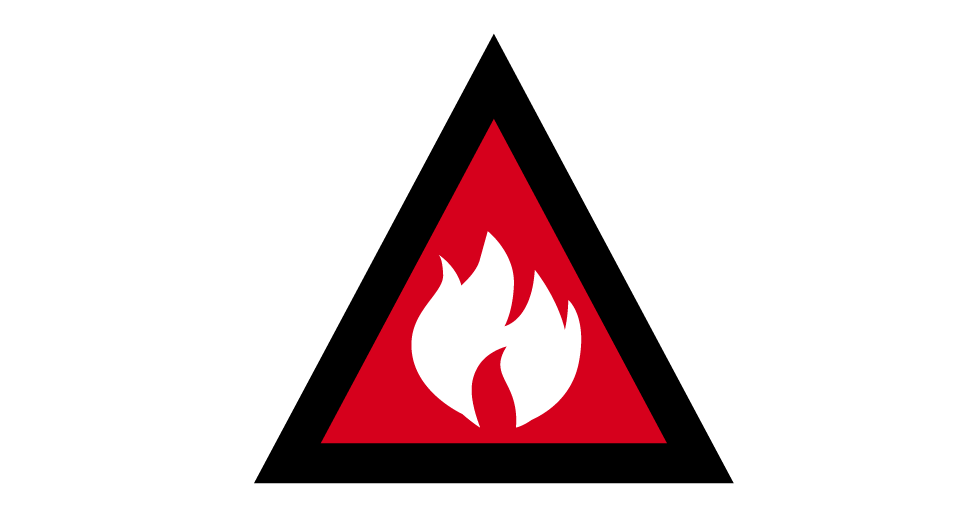
- Leave/evacuate (immediately, by am/pm/hazard timing)
- Seek/take shelter now
- Shelter indoors now
- Too late/dangerous to leave
Australian Fire Danger Rating System
From 1 September 2022, Australia simplified and action-oriented the fire danger rating system or Australian Fire Danger Rating System (AFDRS)
Check today's Fire Danger Rating Click Here to go to the Bureau of Meteorology Fire Ratings page.
About the AFDRS
The Australian Fire Danger Rating System is a new nationally recognised system for fire danger ratings.
Learn more about the system at the official AFRDS website
Xếp Hạng Nguy Cơ Hỏa Hoạn
Fire Danger Rating Vietnamese Translation
DO YOU KNOW WHAT THE RATINGS MEAN?
What are the Fire Danger Ratings?
What do I do?
Each level has actions. See the table below
| Moderate |
High |
Extreme |
Catastrophic |
- Plan and prepare.
- Most fires can be controlled.
- Stay up to date and be ready to act if there is a fire
|
- Be ready to act.
- Fires can be dangerous.
- There’s a heightened risk. Be alert for fires in your area.
- Decide what you will do if a fire starts.
- If a fire starts, your life and property may be at risk. The safest option is to avoid bushfire risk areas.
|
- Take action now
- to protect your life and property.
- Fires will spread quickly and be extremely dangerous.
- These are dangerous fire conditions.
- Check your bushfire plan and ensure that your property is fire ready.
- If a fire starts, take immediate action. If you and your property are not prepared to the highest level, go to a safer location well before the fire impacts.
- Reconsider travel through bushfire risk areas.
|
- For your survival,
- leave bushfire risk areas
- If a fire starts and takes hold, lives are likely to be lost.
- These are the most dangerous conditions for a fire.
- Your life may depend on the decisions you make, even before there is a fire.
- Stay safe by going to a safer location early in the morning or the night before.
- Homes cannot withstand fires in these conditions. You may not be able to leave, and help may not be available.
|
Resources
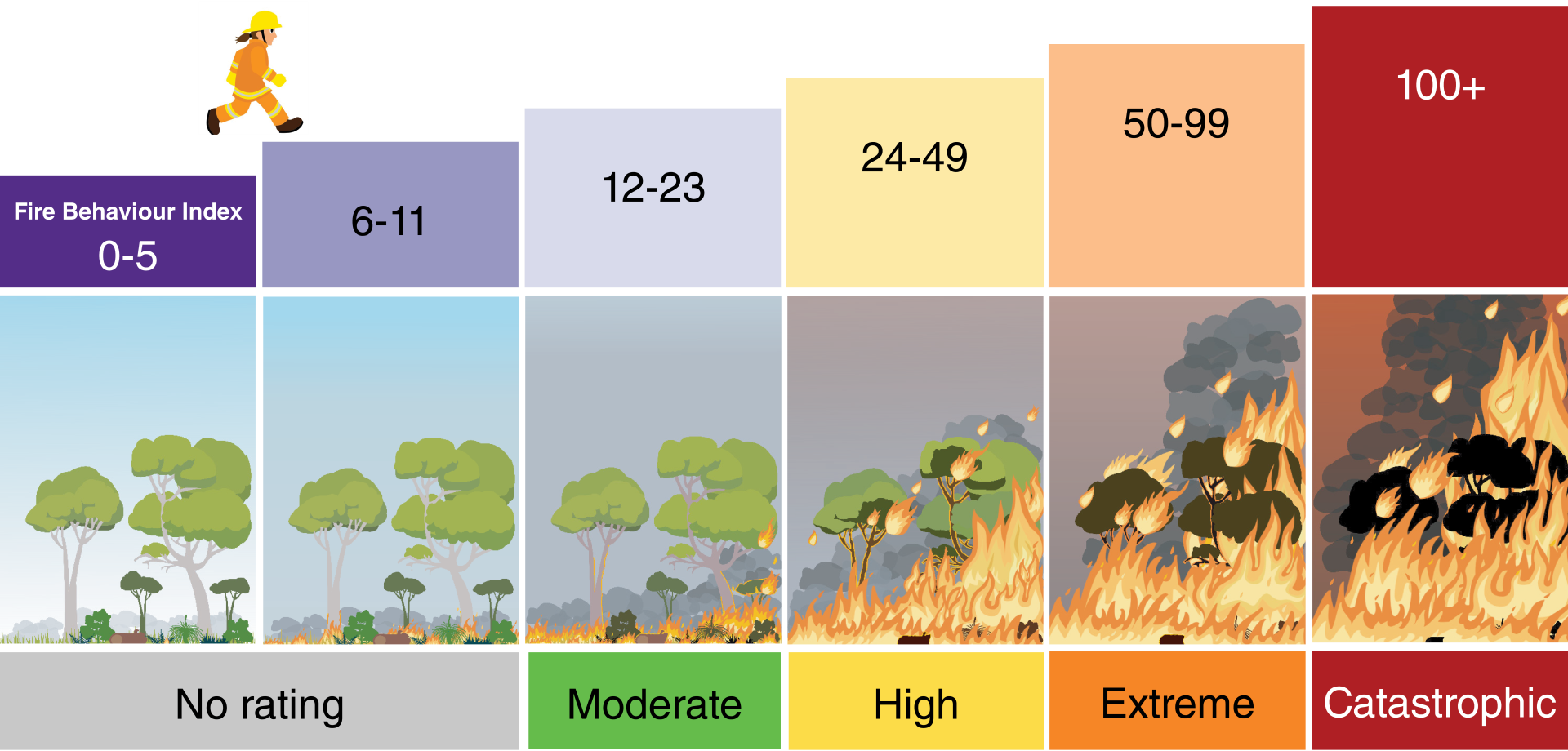
Restricted Burning Period
The Restricted Burning Period for the Shire of Carnarvon is from the 1st of October to the 30th of April each year.
Burn Permits Are Required...
A permit is required in the Shire of Carnarvon for all forms of solid fuel fires (including camp fires, cooking fires, wood and charcoal fires and pizza ovens) from the 1 October to the 30 of April
Apply for a permit here

- Permits will not be issued on Total Fire Ban, Extreme or Catastrophic rated days.
- No fire of any kind may be lit on a day when the forecast Fire Danger Rating for the district is HIGH, EXTREME or CATASTROPHIC.
- You are only allowed to burn on receiving a permit on days when there is no rating or Moderate rating.
To check today's Fire Danger Rating, go to the Bureau of Meteorology Fire Ratings page by clicking here.
Total Fire Ban
A Total Fire Ban (TFB) is declared on days when a fire is most likely to spread rapidly because of extreme fire weather or if there are already widespread fires and fire-fighting resources are being stretched.
When a TFB has been declared, it means a person must not:
- Light, maintain or use a fire in the open air (even when camping)
- Carry out an activity in the open air that causes or is likely to cause a fire
- Use a BBQ or cooker that requires solid fuel
The ban includes:
- Hot works such as welding, grinding, soldering and gas cutting
- All solid fuel fires for the purpose of cooking or camping
- Use of incinerators and other activities e.g. fired pizza ovens
How to check when a TFB has been declared or for more information on fire prevention bans:
- on the Emergency WA website at www.emergency.wa.gov.au
- on the BOM website at www.bom.gov.au/wa/forecasts/fire-danger-ratings
- on the DFES website www.dfes.wa.gov.au/totalfirebans
- on the DFES TFB Hotline 1800 709 355
- call Carnarvon Rangers on 9941 0019
The FES Commissioner is permitted to grant TFB exemptions in accordance with Section 22C of the Bush Fires Act 1954, as a delegate of the Minister. If you require an exemption, you need to apply well ahead of time. An exemption will only be issued under strict conditions and reporting requirements, and only applies for work that cannot be reasonably postponed to a time with safer weather conditions.
You will be fined if you ignore a Total Fire Ban - a $1,000 on-the-spot fine. If it is a serious breach, you could get up to a $25,000 fine and/or be jailed for 12 months.
Lệnh Cấm Đốt Lửa Hoàn Toàn là gì
What is Total Fire Ban? - Vietnamese
Harvest and Vehicle Movement Bans
Harvest and Vehicle Movement Bans are issued by the Shire of Carnarvon and are put in place when your local Bushfire Control Officer identifies the use of engines, vehicles, plant or machinery as high bushfire risk activities, during particular times of the day.
As the machine operator, you are responsible for checking whether any restrictions are in place before you undertake harvesting on your property. It is your duty to make sure your equipment is not likely to start a fire during a ban. If it does, you could be fined. But more seriously, you would be responsible for putting your property, family and community in danger.
To find out if a Harvest and Vehicle Movement Ban has been issued for your area, contact the Shire of Carnarvon on 08 9941 0000 and ask to speak to Community Emergency Services Manager or Bush Fire Control Officer.
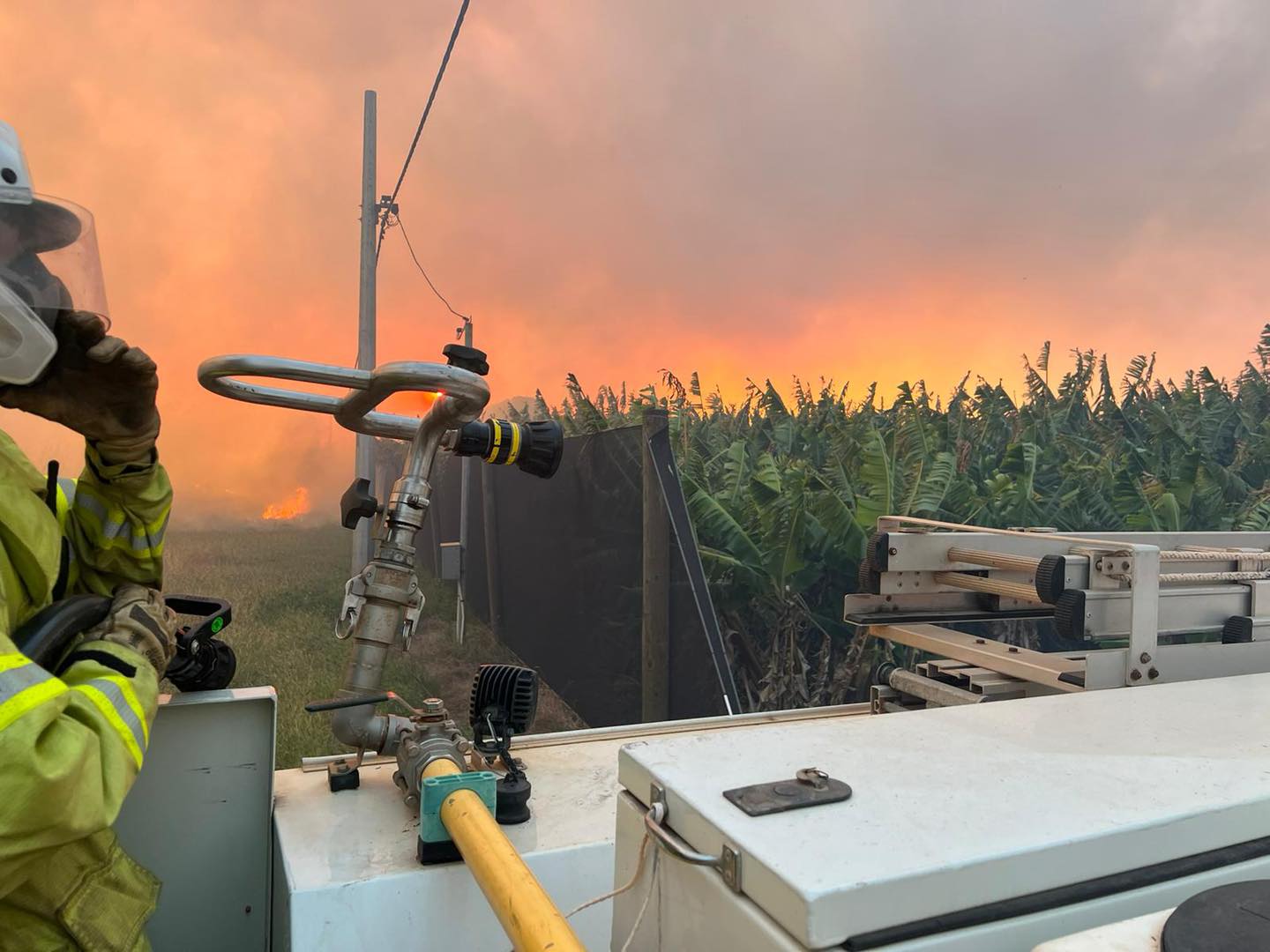
Fire on North River Road 2024
Firebreak Notice Information
Each year, the Shire of Carnarvon issues Firebreak Notices to all landowners and occupiers in the Shire of Carnarvon.
As a measure to assist in the control of bush fires or prevent the spread or extension of a bush fire, all owners and occupiers of land within the Shire of Carnarvon are required before the 1st day of October in each year (or within 14 days of becoming the owner or occupier of land if after that date) to clear firebreaks and maintain them up to and including the 30th day of April the following year, in accordance with this notice.
Any person failing to comply with these notices may be liable, whether prosecuted or not, to pay the cost of the Shire of Carnarvon obtaining contractors to perform any fire hazard reduction works on your property. (Section 33 Bush Fires Act 1954)
The penalty for failing to comply with these notices is a fine of $5,000 or a modified penalty of $250 per day.
DOWNLOAD YOUR COPY OF THE FIREBREAK NOTICE
Shire of Carnarvon Firebreak Notice - English
PREPARING YOUR FIREBREAKS
Firebreaks are there to reduce the spread of a low-intensity fire and to provide safe access on your property for firefighters, so must be maintained and kept clear of all obstacles and flammable materials.
Firefighters need to be able to use the firebreak on days of strong winds or extreme conditions. It is generally accepted that a 3m firebreak will be unlikely to stop a wildfire, however, it assists firefighters. The more fire prevention work you undertake, the greater the chance of your family and property surviving a fire.
Such firebreaks may be constructed by one or more of the following methods:
- Ploughing
- Cultivating
- Scarifying
- Raking
- Burning
- Chemical Spraying
- or another approved method
For more detailed information see the Guide to Constructing and Maintaining a Firebreaks published by DFES by clicking here
DISCHARGING SMOKE & WHAT NOT TO BURN
Not all materials are suitable for burning. Burning any materials that discharge smoke into the environment can cause air pollution and health problems, particularly for the elderly and children.
You do not need a permit to burn during the winter months, this is the perfect time to reduce the fuel load on your property. If you are going to burn, you are still required to exercise caution, manage smoke nuisance and ensure that there are no materials that create black smoke.
Some examples of what NOT to burn:
- Carpet, fabrics or textiles
- Irrigation and plantation bunting/plastics
- Green waste that has not been dried for at least 2 months
- Electrical cables
- Chemicals
- Organic solvents
- Paint
- Plastic including polystyrene
- Rubber
- Waste oil, fats or grease
- Timber that has been treated with preservatives
- Tyres
- Vehicles or vessels and their parts
Burning these materials releases toxic chemicals into the environment. This is an offence under the Environmental Protection Act and can result in a penalty of up to $5,000.
If you are unsure of what you can burn, give the Shire a call 08 9941 0000.
WHAT TO CONSIDER BEFORE BURNING
While burning garden refuse can be a convenient way of removing dead plant material from your property, there are some things you should consider before lighting any fire.
Please download the DFES Burn Smart brochure for more information.
BUILDING PROTECTION ZONE
The purpose of the Building Protection Zone (BPZ) is to reduce flammable fuel in the immediate vicinity of the structure and other assets. It is recommended that you keep a clear area around all habitable buildings to improve the chances of surviving a bush fire.
One way you can help protect your property is to create a circle of safety (building protection zone) around the building:
Create a 20-metre circle of safety around your home and other buildings by clearing all rubbish, long dry grass, bark and material that may catch fire
- Prune lower branches of trees and shrubs up to 2m off the ground to stop a ground fire from spreading into the canopy of the trees
- No tree or shrub (over 2m high) is to be within 2m of a building
- There are to be no tree crowns or branches hanging over habitable buildings
- Ensure roofs, gutters and walls of a building on the land are free of flammable matter
- Wood piles and flammable materials should be stored a safe distance from habitable buildings
- Gas Cylinders should be stored in an area that is clear of all flammable material.
- Gas vent valves should face away from the building and anything flammable.
- Gas cylinders should be securely tethered with non-flammable fastenings to prevent toppling over.
Standards for Building Protection Zones for buildings and critical infrastructure in Bushfire Prone areas
DO YOU HAVE AN EMERGENCY PLAN FOR YOUR HOUSEHOLD?
Do not underestimate the need to have an Emergency Plan for your home, pets and family. A well considered and usable plan that is discussed and tested by your family may well save a life of someone you love dearly and your home.
MY FIRE PLAN
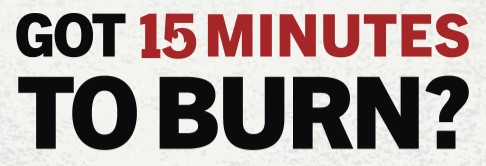
Creating a bushfire plan takes only 15 minutes and can save the lives of your family and your home.
Click here to go the the DFES Got 15 Minutes to burn website to start creating your household's Bushfire Plan.
FIRE PLAN FAQ
DFES has a FAQ page to answer all our questions.
Check it out here
STAY AND DEFEND
Being in a bushfire could be the most traumatic experience of your life. You may have to fight spot fires for hours, even days at a time.
To stay and defend you must:
Before completing your plan, take 5 minutes to answer some key questions to help determine if ‘Stay and defend’ is the right plan for you and your family.
|
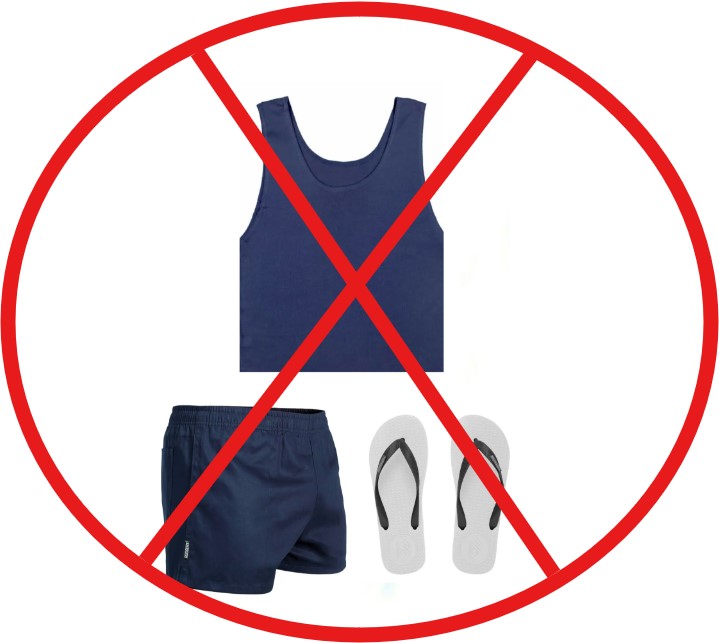
Not Appropriate Fire Fighting Attire
|
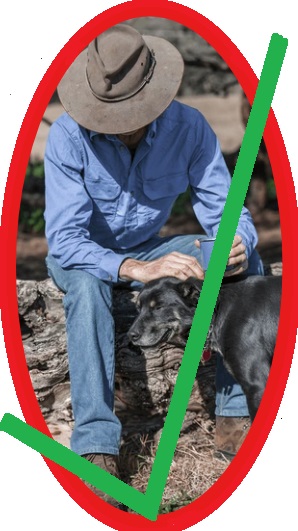
Appropriate Minimum Attire
|
LEAVE EARLY
Great choice! It’s not worth putting your life and your family’s lives at risk.
Leaving early is your safest option in a bushfire emergency.
Take 15 minutes to complete your ‘Be safe and leave early’ plan.
Your bushfire safety plan will help you identify:
- Who you need to protect
- When you need to leave
- Where you will find shelter
- Who you should notify
- What items you need in your bushfire emergency kit
- Your backup plan
HELP ME DECIDE
If you are unsure, we recommend leaving early. It is your safest option.
Don’t risk putting your life and your family’s lives at risk in a bushfire emergency.
Take 15 minutes to complete your ‘Be safe and leave early’ plan.
Your bushfire safety plan will help you identify:
- Who you need to protect
- When you need to leave
- Where you will find shelter
- Who you should notify
- What items you need in your bushfire emergency kit
- Your backup plan
STAY INFORMED
There are many resources available to help you to stay informed. Be sure to save them on your phones, tablets and computers for easy access.
Websites and APPS
Luôn cập nhật thông tin
Stay Informed - Vietnamese
DO YOU HAVE WHAT IT TAKES TO BE A VOLUNTEER
There are 20,000 volunteers in 550 Brigades around Western Australia and we have one. In the Shire of Carnarvon, the Gascoyne River Bush Fire Brigade covers 46,664 square kilometres. We also support the shires of Upper Gascoyne, Shark Bay, Exmouth, and can be deployed to assist anywhere in the state to assist with complex fire systems.
We are located in the sheds just before the bridge on North West Coastal Highway.
Our volunteers give their time freely to undertake training and to attend incidents, and our communities are reliant on them to protect life and property against bushfire and other emergencies.
WHY VOLUNTEER
“We are formed by the community for the community”
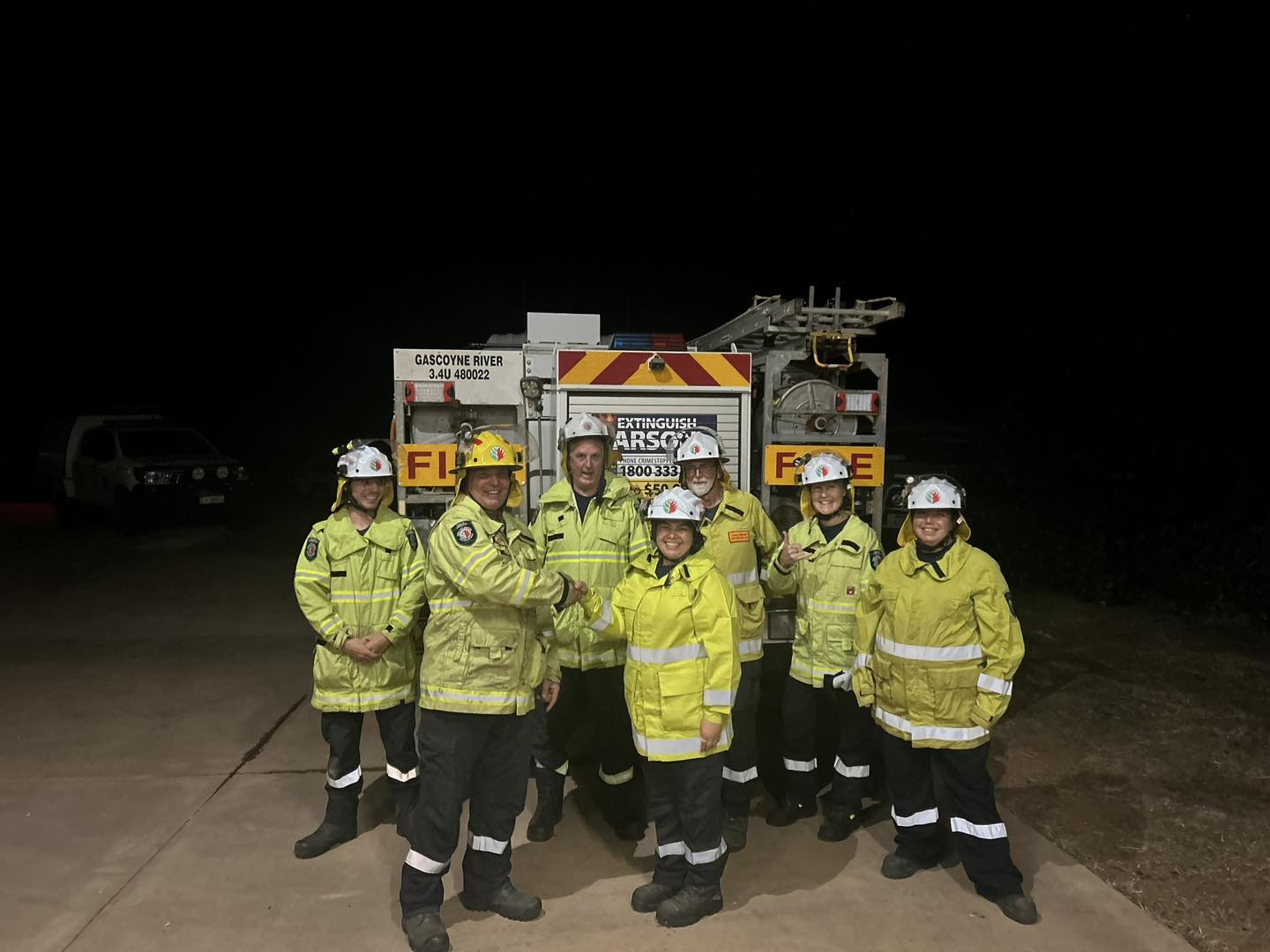
All members are VOLUNTEERS.
They are all busy people with families, just like you.
We are professional in everything we do and we strive for excellence! We are well trained and have a strong focus on Safety AND prepared to drop everything at a moment’s notice to go and protect the community, for no reward.
Being a member can be in many forms, on the front line as a fire fighter or as a member who provides support in other areas such as:
- Maintaining the fire stations grounds (ie fences, gardens lawns and general maintenance),
- Maintaining brigade equipment, making sure they are serviceable, clean and working,
- Undertaking the role of Administrator,
- Undertaking the role of Treasurer,
- Fulfilling roles within the Incident Support Group,
- Providing transport for fire fighters and/ or equipment,
- Being involved in communications during fires, such as being a radio operator, phoning around for extra crews or equipment, or writing down what is happening at the incident,
- Fundraising for equipment and gear to assist others,
- Catering for fire crews.
WANT TO KNOW MORE?
Check out the Bushfire Volunteers Association website... Don't just take our word for how great it is to be a volunteer!

GASCOYNE RIVER VOLUNTEER BUSH FIRE BRIGADE
"TRY BEFORE YOU SIGN!"
You would be most welcome to come out and try before you sign up with the Gascoyne River Volunteer Bush Fire Brigade.

We are a family orientated organisation who values are underpinned by the motto of
"Keep our community safe to keep our families safe!"
We train every second Tuesday. Join in with community events.
Contact the Shire of Carnarvon's Community Emergency Services Manager or the Brigade Captain to for information, events and training dates

SPONTANEOUS VOLUNTEERING
WHAT IS A SPONTANEOUS VOLUNTEER
Spontaneous volunteers are individuals or groups of people who have a strong desire to help. They are not affiliated with a volunteer involving organisation or formal emergency responders. Various terms including community volunteers, emergent volunteers and informal volunteers are often used interchangeably with the term spontaneous volunteer. These individuals perceive the immediacy of the situation and believe that their skills, resources, and experiences can help their community recover faster from the disaster. Based on their location and the type of activity they perform, spontaneous volunteers can be categorised into four types: local leaders, local helpers, external leaders and external helpers (Ahmad, 2024: www.volunteeringwa.org.au/assets/downloads/spontaneous-volunteer-engagement-report-vwa-july-2024.pdf)
PASTORAL / FARMER RESPONSE INCIDENT GUIDELINES
Are you having trouble determining whether you are a Spontaneous Volunteer or Bush Fire Brigade Volunteer?
Please use the decision-making tool listed below to assist in making that decision.
Pastoral/Farmer Response Incident Guidelines
Need Help?
If you are not comfortable in conducting a burn yourself or would like to burn a larger area on your property, the local volunteer fire brigades can assist with your burns for a fee, subject to volunteer availability.
Please note that this service is available on land that you own or rent only, and does not include areas adjoining your property, including road verges. All funds raised through conducting burns on the private property go directly towards supporting your local volunteer fire brigades.
Engaging the brigades does not remove the landowner's responsibility to adhere to the Firebreak Notice. Contact your local brigade for more information:
For more information about burning, please contact the Community Emergency Services Manager on 0448 081 637.
